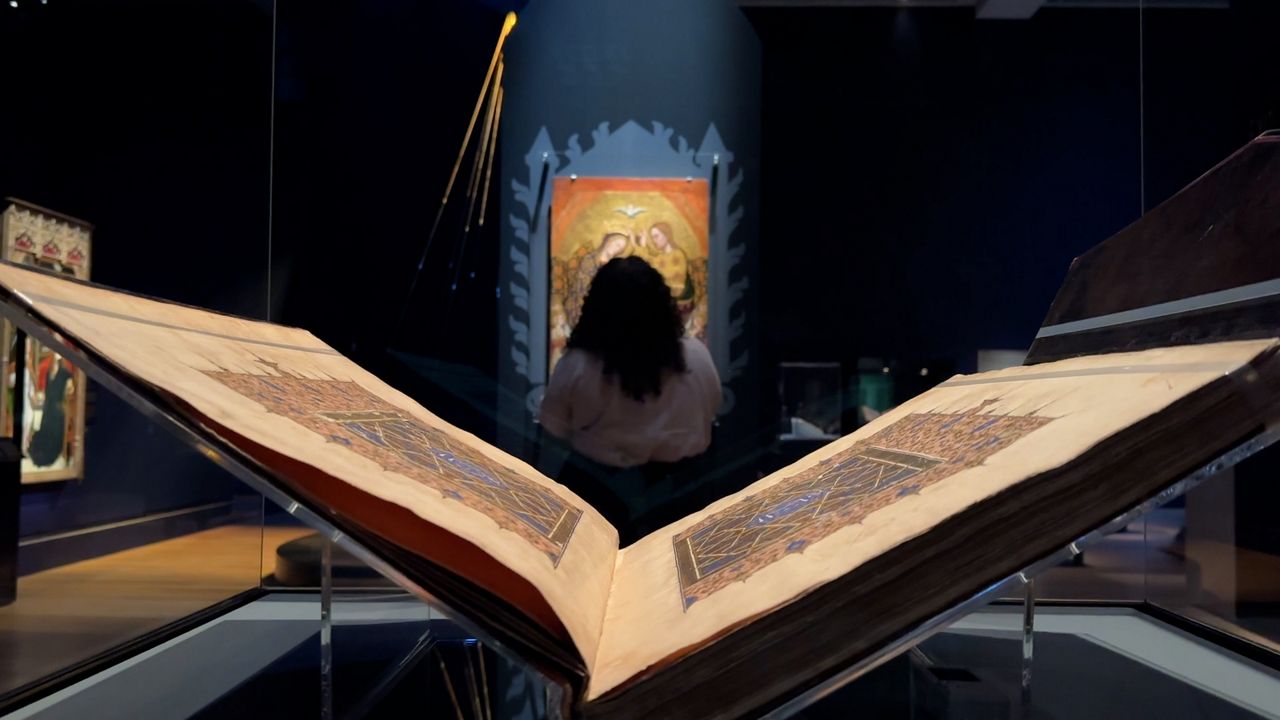LOS ANGELES — In a way, PST ART is like the big bang theory — a massive explosion of creativity that sends music, fashion and photography hurling to every corner of SoCal’s art atmosphere. The result is a huge collaborative exhibit that Katherine Elizabeth Fleming, president and CEO of the J. Paul Getty Trust, said can really only happen here.
“I’ve found Southern California to be astonishing in terms of the willingness and eagerness of the various organizations to collaborate with one another, and I think that the format of PST art simply taps into that and really leverages it in a phenomenal way,” she said.
This is the third edition of the event that so far has been held every six years. The funding for the exhibits comes from the Getty Foundation and so does the theme — in this case art and science collide — but that’s where their input ends.
“We didn’t tell people what the contents of their work should be,” Fleming explained. “And quite surprisingly, a number of really clear themes emerged, one of which is the theme of climate change, sustainability. That is just what bubbled up organically, from all of the incredible artists and institutions.”
Joan Weinstein is the director of the Getty Foundation and one of the founders of newly rebranded PST ART, which was originally called Pacific Standard Time.
“When you type that into Google, you’re just going to come up with an endless stream of time zones, so if you wanted to get it up to the top of the search engine optimization, we needed to change the name,” she said with a laugh.
Talk about art and science colliding — a theme she finds fascinating.
“What I love about the theme is how much we’re learning about what artists and scientists have in common,” she said. “It’s really about imagination. It’s about pushing boundaries. It’s about collaboration often.”

(Spectrum News/Tara Lynn Wagner)
Art and science have a longstanding partnership, actually, working hand in hand for centuries. Amy Scott is a curator at the Autry Museum of the American West, which has several exhibits under the PST ART umbrella, from old photographs and illustrations created during the surveys of the late 1870s to expansive look at futurism in contemporary indigenous art.
“Futurism is especially important to Indigenous artists working today, precisely because, you know, art and science both have colluded to erase them from much of modern society over the past 200 years,” she told a group she was leading in a tour.
She’s curated shows for every PST ART so far and calls the event an immense opportunity for institutions of all sizes.
“It helps get our name into this much broader pool of, you know, not just regional, but some truly international museums and attention, and it brings the spotlight on all the institutions that participate that we might not otherwise have access to on our own,” Scott explained.
While every imaginable type of art is included, Weinstein says the event is also about interaction. She believes topics like AI and climate change and social justice need to be discussed and arts institutions are the perfect setting for those talks to happen.
“Museums are actually trusted institutions,” she said. “They’re places to be able to have difficult conversations and have them in a way that isn’t polarizing. And I think that’s what the arts offer.”
“We need art now more than ever,” Fleming agreed. “We know that it is good for you, quite literally, to be around art, to view art, and to interact with art. And on a macro level, that would imply that it’s really good for the planet as well.”
It is why she was pleased to announce last week that PST ART is here to stay.
“The Getty has decided to make this a regular part of its planning,” she said. “It’ll happen every five years.”
She admits it would be difficult for any one person to see every single installation, which is why they’ve put together some suggested itineraries for those wanting a curating course. What’s marvelous about having the works of more than 800 artists on display is that everyone is sure to collide with something that triggers the release of dopamine — or in less scientific terms, find art that makes them feel good.
